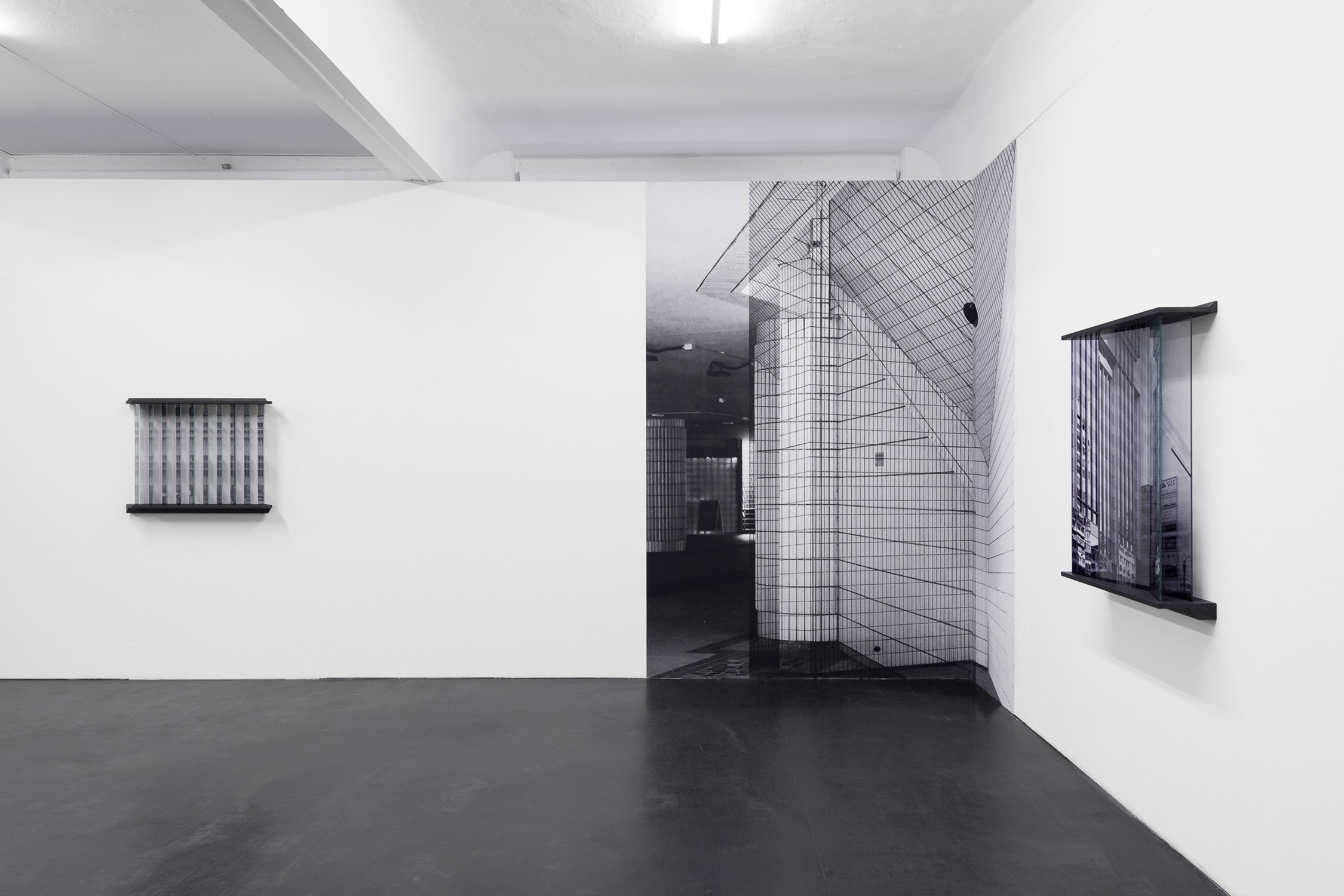
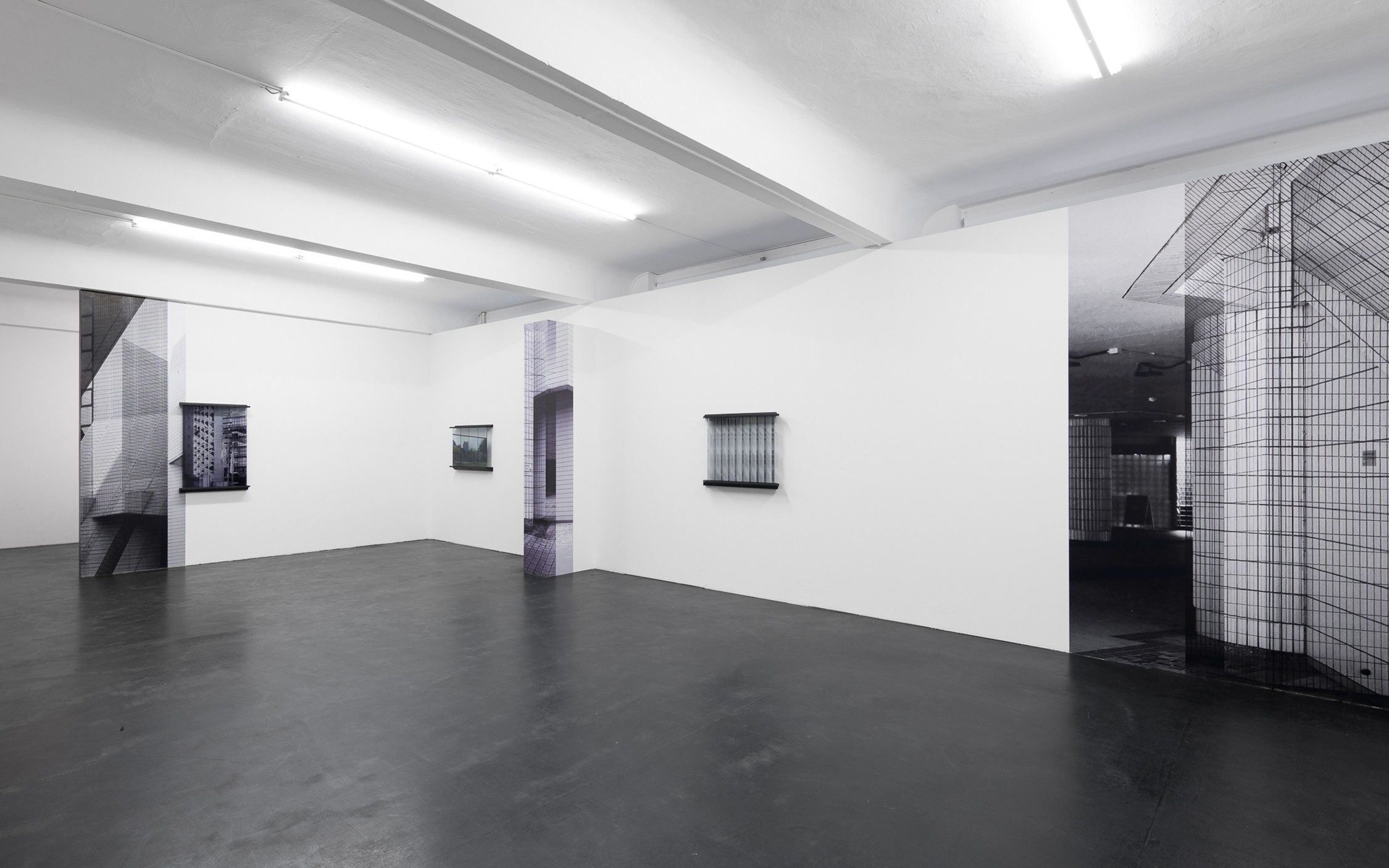
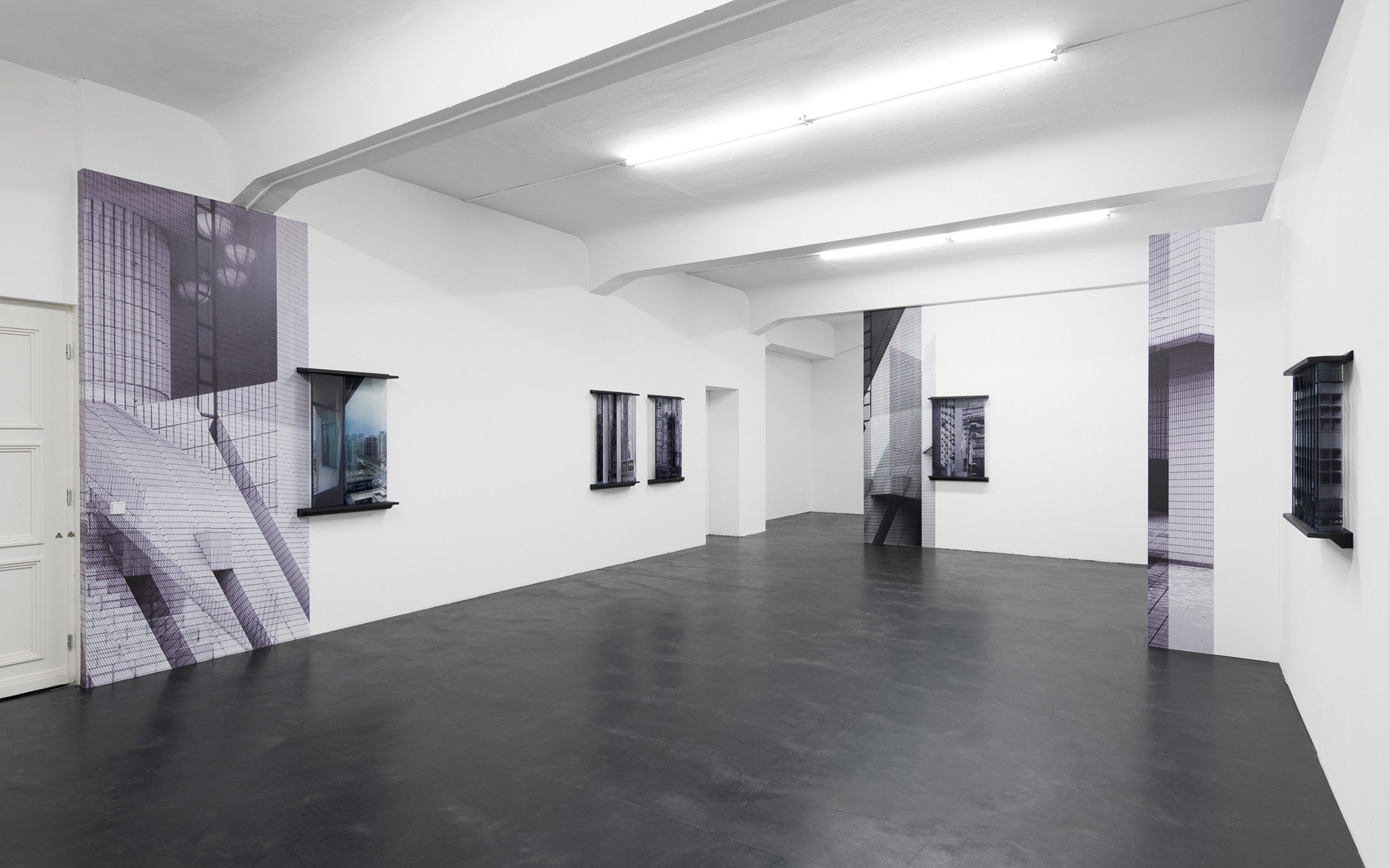
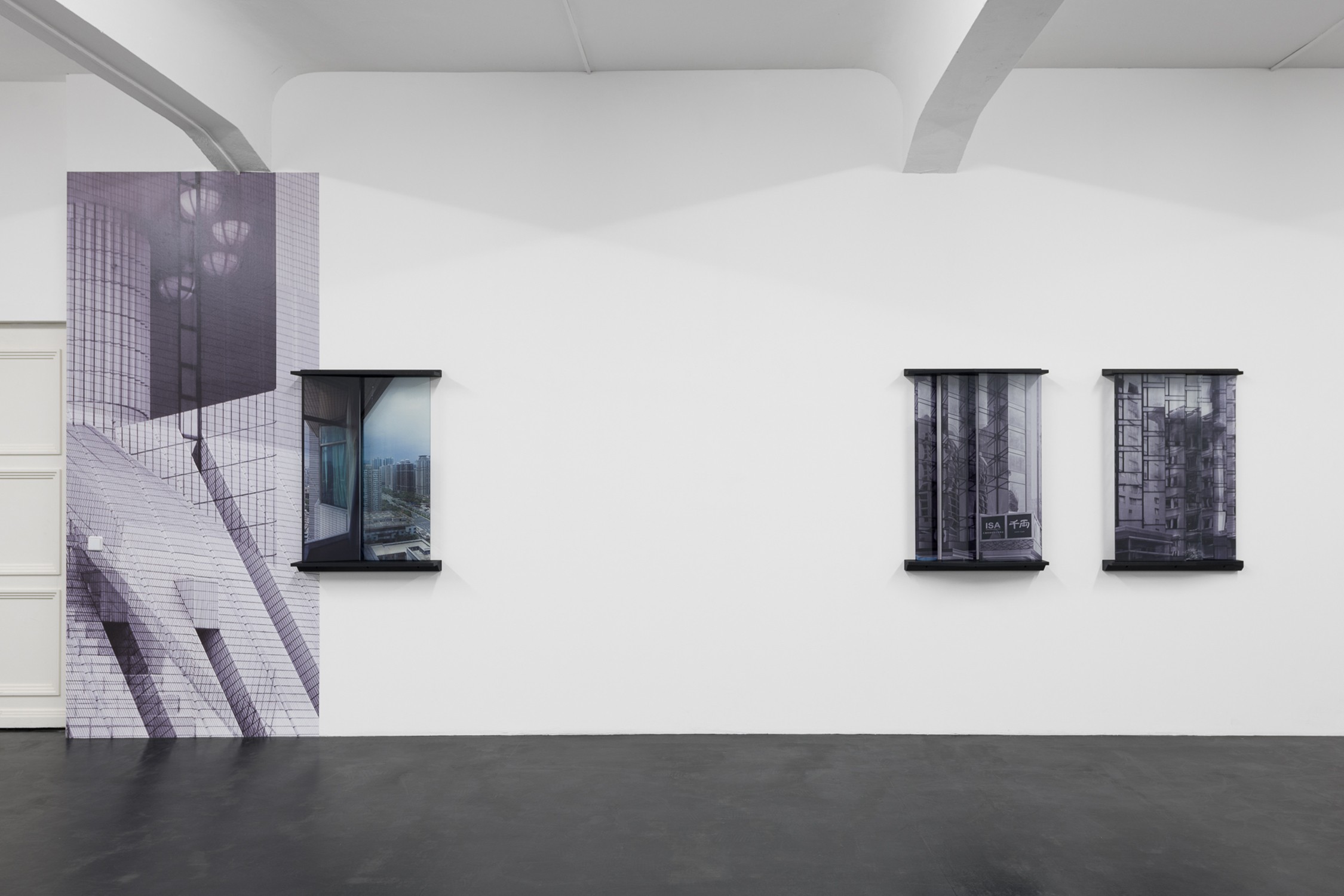
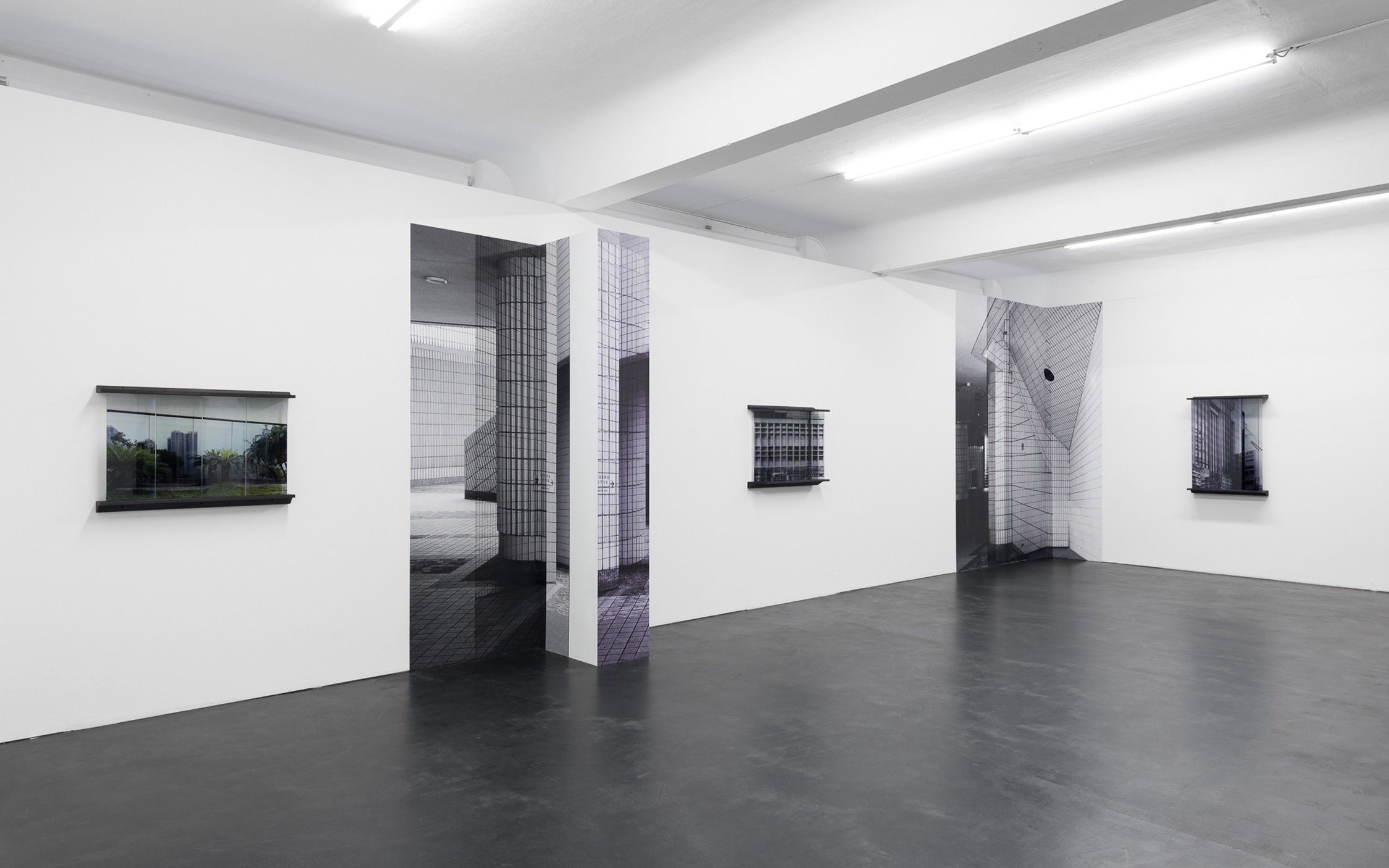

Dissolution of Perception
Sinta Werner’s New Urban Disruptions and Superimpositions
Architecture as sculpture is followed by the artificiality of cinematography, both in an actual and in a metaphorical sense: architecture itself has now become film.[1]
Sinta Werner’s most recent series of wall objects bears the title Reverse Cut – A Matter of Degree (2018), after which the artist’s current Berlin exhibition has also been named. In film and video production, the term refers to a sudden reversal of the perspective that breaks through the course of action and has a strongly disorienting effect. In her new glass reliefs, which oscillate between different mediums, Werner employs this breach of the axis of vision and action as a multidimensional aesthetic principle of disruption. The multiply fragmented spatial images and pictorial spaces that the artist has created in the past years are essentially concerned with the question of how we perceive our built environment and how we navigate through the increasing acceleration and dissolution of the reality in which we live. The urban architectural structures and mostly profane interiors, which function as pivotal elements in the artist’s delicate, multilayered work, are both subjects and visual platforms of friction and reflection. Her wall and spatial installations not only transcend the boundaries between inside and outside and between the three-dimensional object and the two-dimensional surface, but also between the presented work and its site of presentation, and, more recently, also between the subject of the work and its representation. As a catalyst of a prismatic mode of seeing, Werner’s works direct the eye in different directions at once, constantly changing their appearance according to the recipient’s position in the space.
The Berlin-based artist reacts specifically to each particular (exhibition) environment. She has repeatedly made pre-existing elements of the interior design of the given space subjects of her works. Her consistent methods of deceiving, diverting, and enhancing the viewer’s perception include reduplications and reflections, shifts and rotations, dislocations, vaulting and inversion in the sense of negative-positive forms, as well as the interplay between the illusion and the tangible object, which, in turn, is often masked as an illusion. Her reduplications overlie the source phenomena like a second skin, while the revelation of the illusion is literally incorporated into her works. Photographic images produced by the artist serve as material for montages and collages that are applied to various surfaces (including MDF panels, wood structures, and paper) and are interspersed with gaps and blank spaces. In some of her spatial installations, Werner refers to methods of electronic image processing on the computer screen incorporating, as Ludwig Seyfarth has pertinently pointed out, “the potential inherent in the construction of digital images and spaces into the ‘old’ analog world.”[2]
In her present exhibition, the artist activates photographic images of city facades that she took during a recent journey to China through a quasi-filmic dynamic. Here she now seeks to visualize the dissipation and liquefaction of the “spatial perception of the metropolis in motion,”[3] which she already focused upon in her multi-perspectival collage series Korrektur der Gegenbewegung (Correction of Counter-Movement, 2015). In the process, the artist short-circuits the experience of passers-by striding past reflecting surfaces and diffuse, shattering structures with the “aggregate state of the city as fluctuation and acceleration.”[4] In the wallpaper work Opportunities of Displacement (2018), arranged in a dramaturgy of spatial intervals, this unstable, transitory “aggregate state” is evoked by superimposing photographic images of the Hong Kong Cultural Center taken from various angles in the style of classical double exposures. Werner amplifies the visually confusing impression of the Hong Kong Cultural Center, which is covered with a grid of vertical tiles, by spanning cords across the photographic representations, additionally making the depicted grids appear to vibrate. The “feeling of disorientation and disembodiment,”[5] which has its origin in the experience of the mirror labyrinths of today’s metropolitan architecture, is thus still enhanced.
In her new series of glass works Reverse Cut – A Matter of Degree, an extension of her collage technique with other methods, the artist has concretely materialized the urban phenomenon of “pseudo-transparency” and optical liquefaction in the deceptive game of mirror reflections, shifts, and reduplications for the first time. Selected urban motifs, among these a convoluted office and residential complex in Guangzhou, were exposed in this case on transparent Duraclear film and laminated on the back of glass panels. In the object-like works, the motifs have been deconstructed into lamellar segments and inserted into mounting fixtures in staggered arrangements. The fragmented architectural structures are thus set into motion; in syncopated rhythms, they fluctuate between sharpening contours and dissolution, losing their “thingness” in flowing, almost filmic sequences and in shimmering reflections. Simultaneously, in the analogy between the subject of the image and its medium the representation gains in substance: the pictorial objects are not only symbolic placeholders, but rather directly embody the glass facades to which they make reference. Perhaps even more so than before, the artist’s current works draw attention to the paradox between presence and absence, acceleration and deceleration, transparency and impenetrability, which today not only determines the face of our cities, but our entire image-suffused and image–overlaid world. In her works, the “’high resolution’ […] of reality itself,”[6] which Paul Virilio established as a preliminary endpoint of the “visual disturbances brought about by acceleration,”[7] is both materialized and given further latitude.
Belinda Grace Gardner
[1] Cf. Paul Virilio, Ästhetik des Verschwindens, Germ. transl. by Marianne Karbe and Gustav Roßler, Berlin 1986 [Paris 1980], p. 72.
[2] Ludwig Seyfarth, Mirrors that are not what they seem, in: Sinta Werner: Im Bildraum der Wirklichkeit / In the Pictorial Space of the Real, Engl. transl. by Jeremy Gaines, Berlin 2016, p. 14.
[3] Quoted from a text on Sinta Werner’s series Korrektur der Gegenbewegung (Correction of Counter-Movement); (cf.: http://www.sintawerner.net/index.html; Nov. 21, 2018).
[4] Ibid.
[5] Sinta Werner in a short description of her new photo-wallpaper work Opportunities of Displacement (in an email to the author, Nov. 11, 2018).
[6] Paul Virilio, The Vision Machine, Engl. transl. by Julie Rose, Bloomington & Indianapolis, Indiana, 1994 [Paris 1988] (https://archive.org/stream/PaulVirilioTheVisionMachine/Paul+Virilio+-+The+Vision+Machine_djvu.txt; Nov. 24, 2018).
[7] Id., Berlin 1986, p. 57.
[Unless otherwise indicated, the quotes are the author’s translation from the German.]
Installation views: Trevor Good